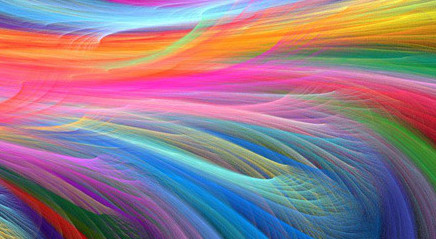Obsessive–compulsive disorder (OCD) is a mental disorder in which a person feels the need to perform certain routines repeatedly (called "compulsions"), or has certain thoughts repeatedly (called "obsessions").

Obsessions are unwanted, intrusive thoughts, images, or urges that trigger intensely distressing feelings.

The person is unable to control either the thoughts or activities for more than a short period of time.
Most adults realize that the behaviors do not make sense. The condition is associated with tics, anxiety disorder, and an increased risk of suicide.
Risk factors include a history of child abuse or other stress-inducing event. Some cases have been documented to occur following infections. The diagnosis is based on the symptoms and requires ruling out other drug related or medical causes.
Rating scales such as the Yale–Brown Obsessive Compulsive Scale (Y-BOCS) can be used to assess the severity.
Other disorders with similar symptoms include anxiety disorder, major depressive disorder, eating disorders, tic disorders, and obsessive–compulsive personality disorder.
The phrase obsessive–compulsive is sometimes used in an informal manner unrelated to OCD to describe someone as being excessively meticulous, perfectionistic, absorbed, or otherwise fixated.

Other obsessions concern the possibility that someone or something other than oneself—such as God, the devil, or disease—will harm either the person with OCD or the people or things that the person cares about.

Other individuals with OCD may experience the sensation of invisible protrusions emanating from their bodies, or have the feeling that inanimate objects are ensouled.

Some people with OCD experience sexual obsessions that may involve intrusive thoughts or images of "kissing, touching, fondling, oral sex, anal sex, intercourse, incest, and rape" with "strangers, acquaintances, parents, children, family members, friends, coworkers, animals, and religious figures", and can include "heterosexual or homosexual content" with persons of any age.

As with other intrusive, unpleasant thoughts or images, some disquieting sexual thoughts at times are normal, but people with OCD may attach extraordinary significance to the thoughts. For example, obsessive fears about sexual orientation can appear to the person with OCD, and even to those around them, as a crisis of sexual identity.
Furthermore, the doubt that accompanies OCD leads to uncertainty regarding whether one might act on the troubling thoughts, resulting in self-criticism or self-loathing.

Some people with OCD perform compulsive rituals because they inexplicably feel they have to, while others act compulsively so as to mitigate the anxiety that stems from particular obsessive thoughts.

The person might feel that these actions somehow either will prevent a dreaded event from occurring or will push the event from their thoughts.

Some individuals with OCD are aware that their behaviors are not rational, but feel compelled to follow through with them to fend off feelings of panic or dread.

People rely on compulsions as an escape from their obsessive thoughts; however, they are aware that the relief is only temporary, that the intrusive thoughts will soon return.

Some people use compulsions to avoid situations that may trigger their obsessions. Although some people do certain things over and over again, they do not necessarily perform these actions compulsively.
In addition to the anxiety and fear that typically accompanies OCD, sufferers may spend hours performing such compulsions every day. In such situations, it can be hard for the person to fulfill their work, family, or social roles.

People with OCD can use rationalizations to explain their behavior; however, these rationalizations do not apply to the overall behavior but to each instance individually.
Someone exhibiting OCD signs does not necessarily have OCD. Behaviors that present as (or seem to be) obsessive or compulsive can also be found in a number of other conditions as well, including obsessive–compulsive personality disorder (OCPD), autism spectrum disorder, disorders where perseveration is a possible feature (ADHD, PTSD, bodily disorders or habit problems)[44] or sub-clinically.









No comments:
Post a Comment